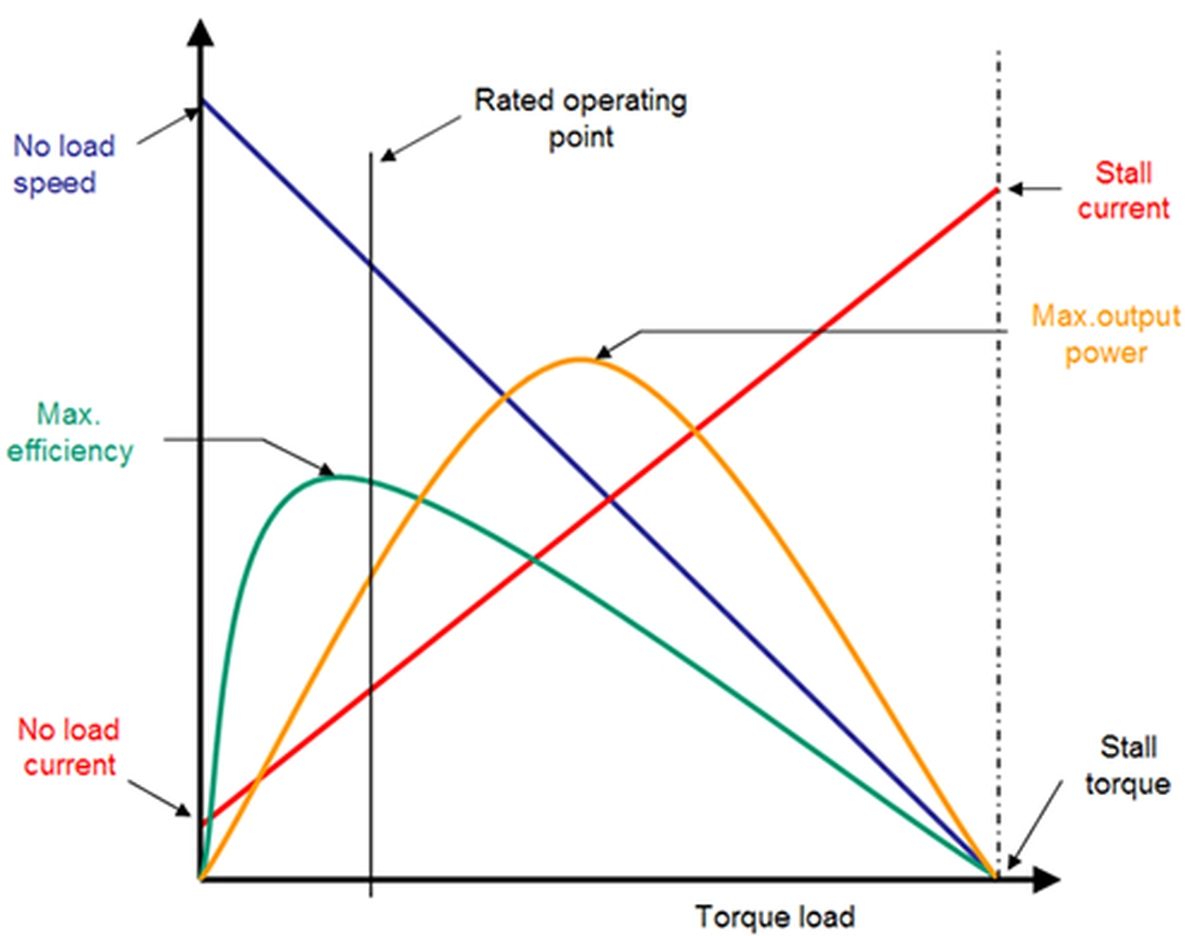Torque Curves for Motor
2024-06-21 15:15:07
Understanding the performance characteristics of stepper motors is crucial for selecting the right motor for any application. The torque curve of a motor serves as a critical tool in this selection process by outlining how a motor performs across various speeds and torque levels. This article explores the concept of torque curves for motors, their significance, and how they can be interpreted to optimize motor performance.
Understanding Torque Curves
Torque curves depict the relationship between motor speed and the torque output of a motor. They are typically presented as a graph, with torque on the vertical axis and speed on the horizontal axis. The curve represents the motor's ability to produce torque at different speeds, providing valuable information about its performance characteristics. Lunyee's products all come with various parameter diagrams and test curves, such as gear motor, AC and DC motors, etc. You can refer to this information when selecting motors.
Speed-Torque Curves
Since the torque and speed of a motor are inversely proportional to each other at a given power, people often use the speed-torque curve as well. A speed-torque curve provides a graphical representation of a motor's torque capabilities across a spectrum of speeds. When selecting a stepper motor, the goal is to choose one that not only meets your speed and torque requirements but also includes a safety margin for reliable operation. These curves are vital as they help compare performance metrics across different motor suppliers and identify the optimal motor-driver combination for your application.
The Shape of Torque Curves
Torque curves generally exhibit specific shapes that can vary depending on the motor type and design. The three common shapes are:
- Constant Torque Region: At low speeds, motors typically operate in the constant torque region. In this region, the motor can provide a relatively constant level of torque, regardless of the speed. This characteristic is particularly important in applications that require high starting torque, such as lifting heavy loads or accelerating machinery.
- Drooping Torque Region: As motor speed increases, the torque output can start to decrease. This region is known as the drooping torque region. The drooping torque curve indicates that the motor's ability to produce torque decreases as the speed increases. It is crucial to consider this characteristic when selecting a motor for applications that require constant torque at high speeds, such as conveyor systems or high-speed machining.
- Maximum Speed Region: At high speeds, the torque output of the motor decreases significantly. This region represents the maximum speed at which the motor can operate efficiently. Beyond this point, the torque output diminishes rapidly, limiting the motor's ability to perform work effectively.
Interpreting Torque Curves

Interpreting torque curves is crucial for motor selection and optimization. By analyzing the curve, engineers can determine the motor's operating range, efficiency, and suitability for specific applications. Key factors to consider when interpreting torque curves include:
- Peak Torque: The peak torque represents the maximum torque that the motor can produce. It is typically achieved at low speeds and is crucial for applications requiring high starting torque, such as accelerations or lifting heavy loads.
- Continuous Torque: Continuous torque refers to the torque that the motor can sustain without exceeding its thermal limits. It is essential to ensure that the motor can continuously provide the necessary torque for the application without overheating or damaging the motor.
- Speed Range: The torque curve provides insights into the motor's speed range. By observing the drooping torque region and the maximum speed region, engineers can determine the motor's operational limits and select the appropriate motor for the desired application speed.
- Efficiency: Efficiency is an important consideration when analyzing torque curves. Motors typically operate most efficiently in the constant torque region. Understanding the motor's efficiency at different speeds can help optimize energy consumption and overall system performance.
- Maximum No-load Starting Speed: Showcases the maximum speed for starting the motor with no load in synchronism.
Conclusion
Torque curves are useful tools for understanding motor performance characteristics. By analyzing these curves, you can determine the motor's operating range, efficiency, and suitability for specific applications. The shape of the torque curve provides insights into the motor's ability to produce torque at different speeds, allowing for informed motor selection and optimization.
See What Lunyee Can Do For You
Contact Us
- 8619149417743
- +86-0371-5562 0274
- [email protected]
- Zhengzhou, Henan Province, China
- Mon-Fri: 9:00 - 18:00




